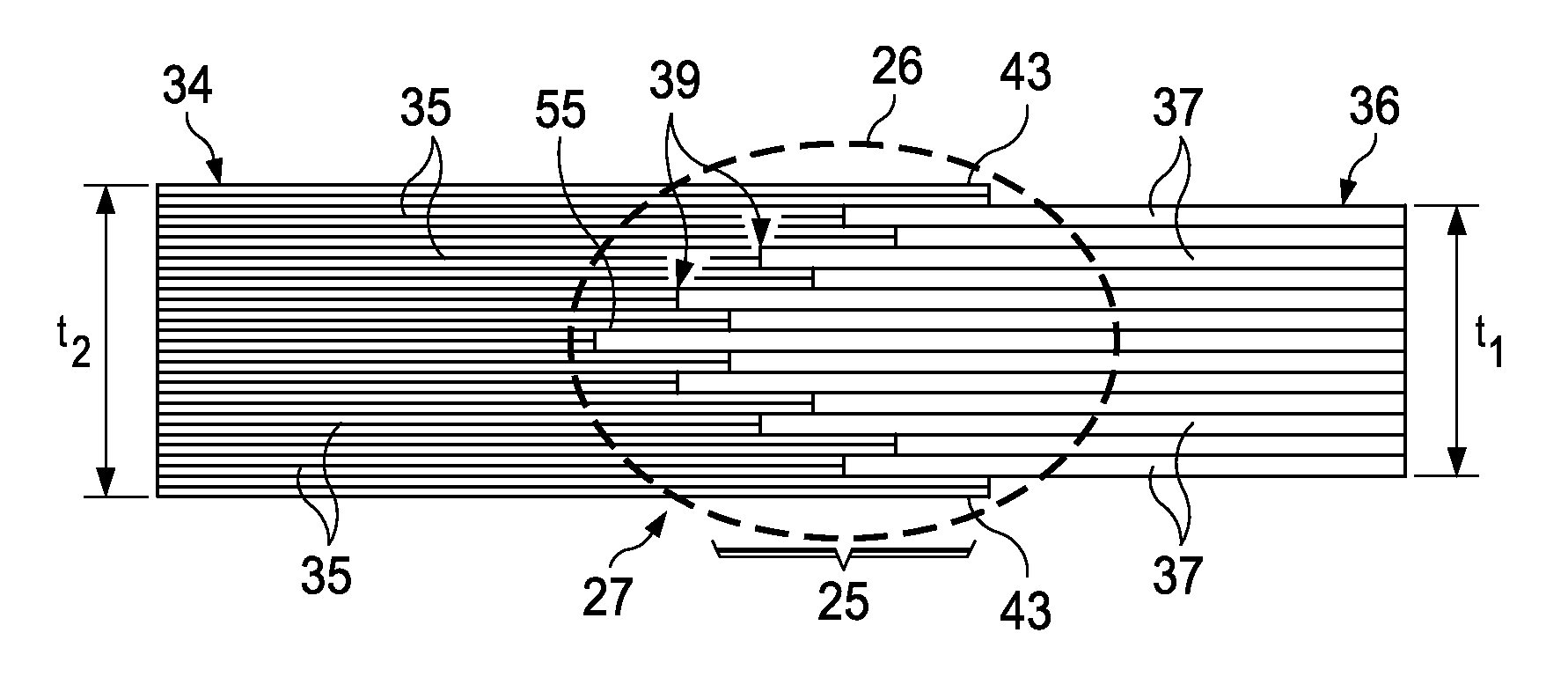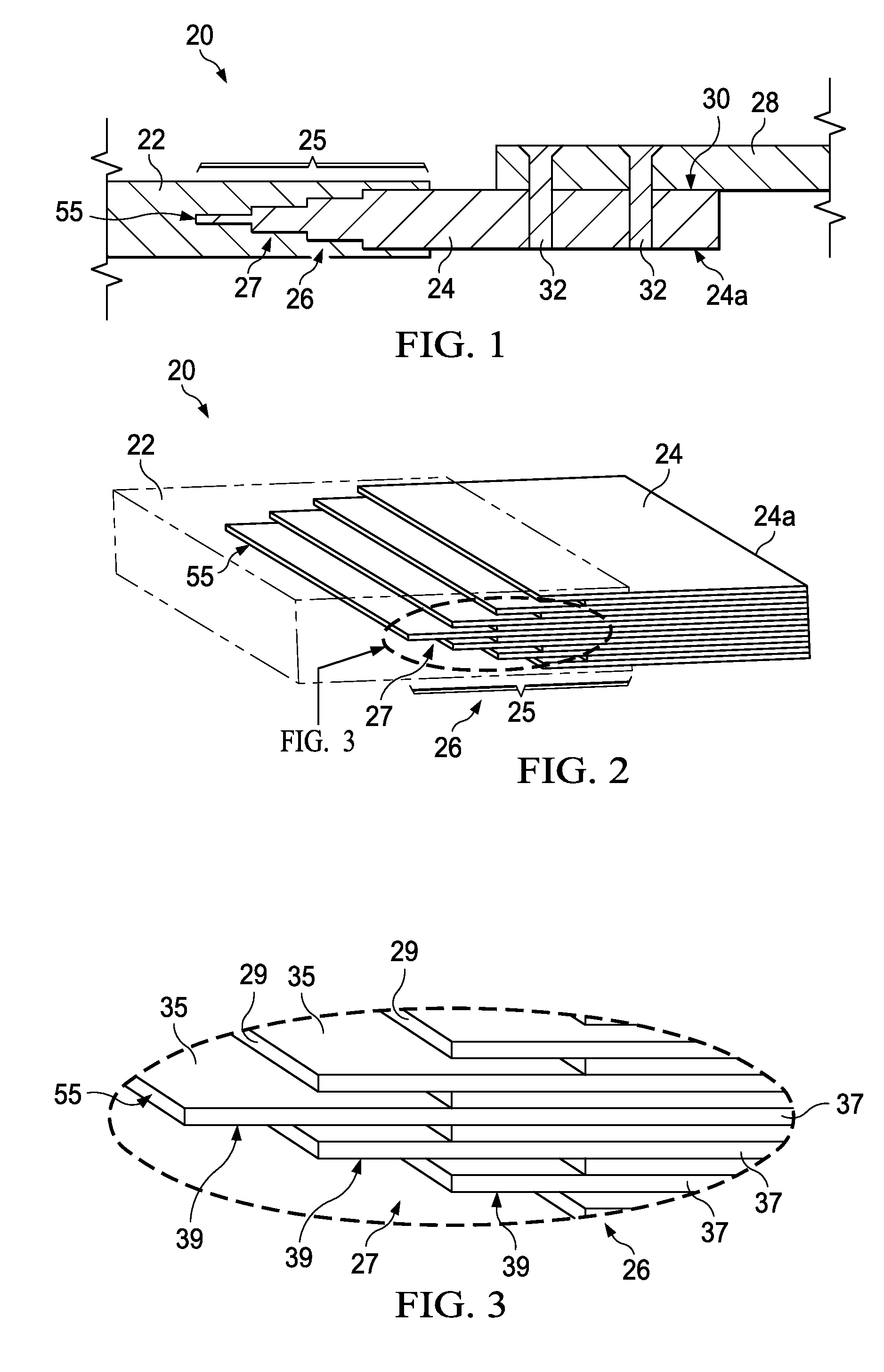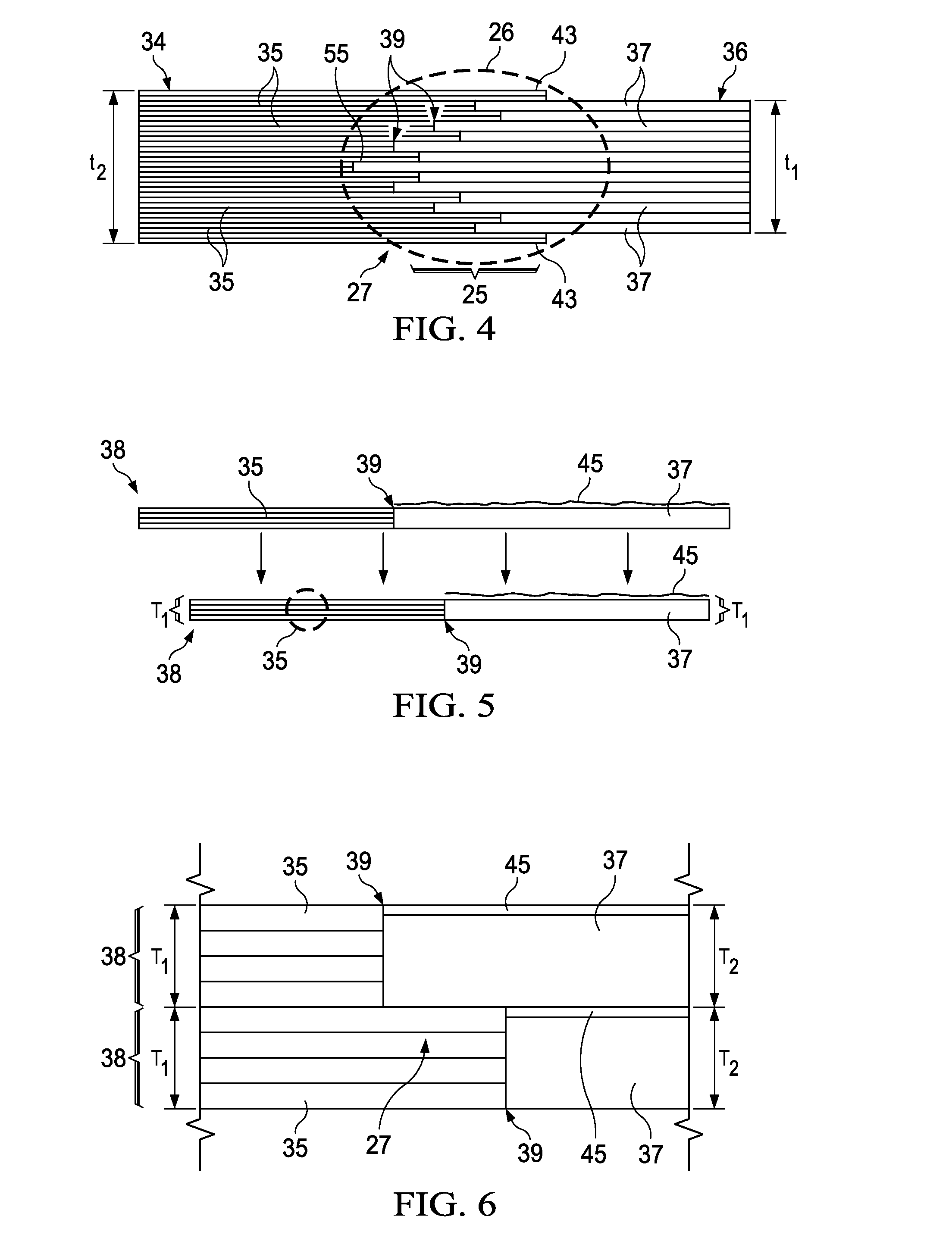Multi-layer metallic structure and composite-to-metal joint methods
a multi-layer metallic structure and composite technology, applied in the field of composite structures, can solve the problems of increasing structure weight, titanium fittings, and relatively high cost, and achieve the effect of reducing or eliminating the possibility of corrosion and/or problems, reducing the occurrence and/or propagation, and reducing the possibility of bending load
- Summary
- Abstract
- Description
- Claims
- Application Information
AI Technical Summary
Benefits of technology
Problems solved by technology
Method used
Image
Examples
Embodiment Construction
[0052]Referring first to FIG. 1, a hybrid composite structure 20 includes a composite resin portion 22 joined to a metal portion 24 by a transition section 25 that includes a composite-to-metal joint 26. In the illustrated example, the composite structure 20 is a substantially flat composite sheet, however depending upon the application, the structure 20 may have one or more curves, contours or other geometric features. For example, composite structure 20 may comprise an inner and / or outer contoured skin 20 of an aircraft (not shown) which is secured to a frame portion 28 of the aircraft by means of a lap joint 30 and fasteners 32 which pass through the composite structure 20 into the frame portion 28.
[0053]The frame portion 28 may comprise a composite, a metal or other rigid material, and the metal portion 24 of the structure 20 may serve as a rigid metal fitting 24 that is suited to transfer a range of loads and types of loadings between the frame portion 28 and the composite port...
PUM
| Property | Measurement | Unit |
|---|---|---|
| thickness | aaaaa | aaaaa |
| thickness | aaaaa | aaaaa |
| thickness | aaaaa | aaaaa |
Abstract
Description
Claims
Application Information
 Login to View More
Login to View More - R&D
- Intellectual Property
- Life Sciences
- Materials
- Tech Scout
- Unparalleled Data Quality
- Higher Quality Content
- 60% Fewer Hallucinations
Browse by: Latest US Patents, China's latest patents, Technical Efficacy Thesaurus, Application Domain, Technology Topic, Popular Technical Reports.
© 2025 PatSnap. All rights reserved.Legal|Privacy policy|Modern Slavery Act Transparency Statement|Sitemap|About US| Contact US: help@patsnap.com



